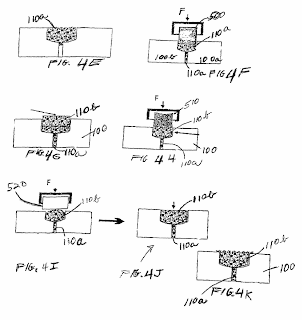Four Thousand Holes
“I read the news today oh boy
Four thousand holes in Blackburn, Lancashire
And though the holes were rather small
They had to count them all . . .”
These lyrics, by John Lennon and Paul McCartney, from the last verse of “A Day in the Life” on the classic 1967 album Sgt. Pepper’s Lonely Hearts Club Band, were inspired by an article they read in the January 7, 1967 UK Daily Mail about . . .
. . . potholes.
Much of the U.S. will soon be moving into pothole repair season. What a treat it is to hit one at speed in traffic on an interstate. Potholes are pretty mundane, but represent a non-trivial source of annual vehicle repair costs to US motorists. A 2009 report by the the American Association of State Highway and Transportation Officials, and TRIP entitled “Rough Roads Ahead, Fix Them Now or Pay for It Later” estimates that rough roads add $335 annually to typical vehicle operating costs, and may be as high as $746 in urban areas with high concentrations of rough roads.
So what does the Beatles’ song “A Day in the Life”, and a report about rough roads have to do with patentECO and clean technology innovations?
Three patents, as examples.
Patent number 6,984,670, “Recyclable composite materials articles of manufacture and structures and method of using composite materials,” was issued on January 10, 2006 to John J. Meyers, III (Penfield, NY), John H. Swartz (Coraopolis, PA), and Nathaniel G. and Matthew J. Kurczewski (Moon Township, PA) and assigned to Ace Tire & Parts, Inc. (Coraopolis, PA). The patent is classified (521/50 with other inventions that deal with a process of treating scrap or waste product containing solid organic polymer to recover a solid polymer therefrom, which lies within a broad class accepting synthetic resins or natural rubbers.
The invention uses a composite material using recyclables (glass, polymers, plastics, rubber, both fiberglass and asphalt roof/siding shingles, coal combustion by-products, metals) and that does not contain newly added petroleum products or new, non-recycled chemicals. This material may be used to fill potholes in asphalt and concrete pavement, fill manhole cover recesses, to make expansion joints in roadways, and in building materials, such as, for example, building blocks, structural panels and other structural elements including pipes and fixtures.
Patent number 6,652,185, “Fast efficient permanent pavement repair material system,” was issued on November 25, 2003 to William D. Frey of Leawood, KS. Frey’s invention can be found with others that provide a reinforced structure in a road structure, process, or apparatus (404/70).
Frey’s innovation provides a repair composite for pavement and pothole repair. The repair composite is composed of an a polyester casting resin premixed with dry silica sand, cobalt in combination with dimethylanaline, and a catalyst. How is this clean tech? According to the invention summary, “[t]he use of this composite will eliminate the use of most of the heavy equipment normally used in road repair.”
Patent number 6,588,973, “Pavement method and composition with reduced asphalt roofing waste,” was invented by James S. Omann (Rogers, MN), and granted on July 8, 2003. The invention deals with pavement aspects of a road structure, process, or apparatus (404/17).
Omann has invented a method of manufacturing and applying a novel pavement and patch material for roadways, driveways, walkways, patch for potholes and like surfaces, including the steps of reducing recycled asphalt roof waste to granules, adding aggregate and other solid recyclable materials to the granules, adding rejuvenating oil, adding emulsifier, adding asphalt concrete oil, adding anti-strip additives, adding liquid silicone, mixing the composition, heating the composition, applying the composition to the roadway or the like and compacting a new paving material.
These inventions fall within the recycling aspect of the patentECO Industry Index, but also within the road construction materials and techniques components of the Transportation Index.
And the lyrics at the top of this piece are found within the great music index.

